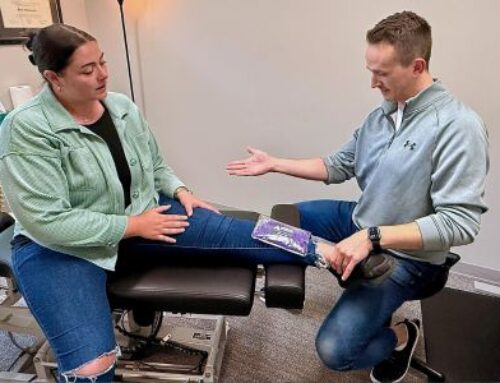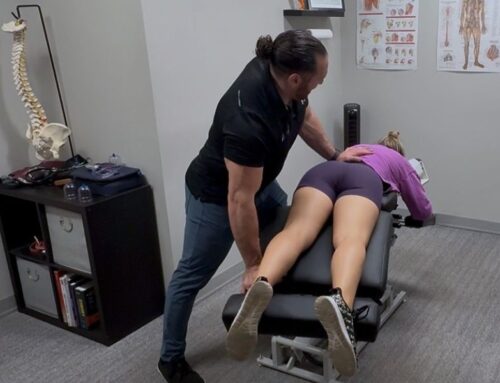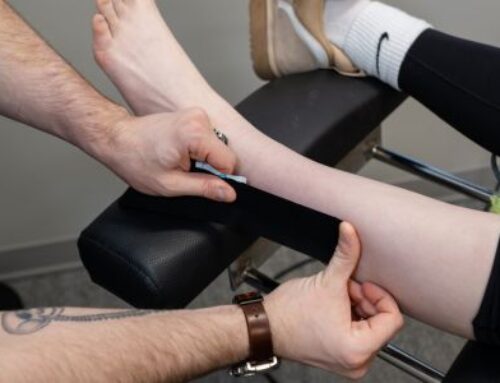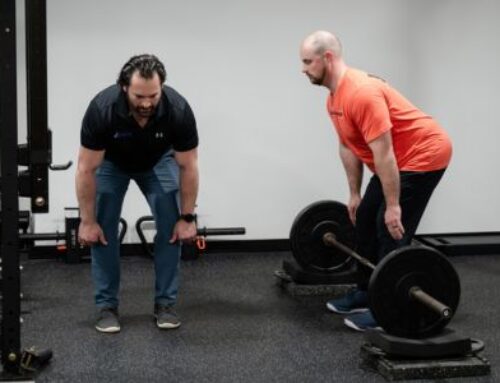Labor preparation can involve so much, but supporting your body with mindful movement, breath, and awareness is one area that we can help with. These practices help you move with more ease and confidence during pregnancy and labor. When teaching the Prenatal Yoga Series, I break this down into three key areas: breath, pelvic floor, and mobility.
Breath for Labor Prep
During pregnancy, your subcostal angle can increase from 68 degrees to 103 degrees, changing the way your diaphragm moves. The diaphragm, your primary breathing muscle, becomes about 4 cm higher because of the upward pressure from the uterus. This can make full, deep breaths more difficult to achieve.
Practicing 360-degree breathing trains your diaphragm and ribcage to expand in all directions. This expansion creates more space in the lungs, improves oxygen exchange, and reduces pressure on the pelvic floor.
- To practice, place a yoga strap around your ribcage, keeping gentle tension for feedback. Inhale and expand the ribs outward, backward, and into the strap. Exhale and let the ribcage gently narrow. You can also just place your hands on the sides of your ribcage instead of a strap.
This technique not only supports lung and diaphragm function, but also helps regulate the nervous system. Deep breathing lowers stress hormones and activates the parasympathetic system, which promotes relaxation. In labor preparation, these calming signals are vital for coping with contractions.
Pelvic Floor Awareness
The pelvic floor is a group of muscles spanning from the pubic bone to the tailbone. These muscles support your bladder, uterus, and bowels. During pregnancy, they must carry more weight while still maintaining flexibility for delivery.
For labor preparation, the ability to relax the pelvic floor is crucial. Tight or uncoordinated pelvic floor muscles can make descent and pushing more difficult.
- In a child’s pose or puppy dog pose, you can connect breath with pelvic floor relaxation. Inhale and visualize a light on your tailbone that is shining brighter as the pelvic floor lengthens and relaxes. Exhale and feel a gentle lift and visualize the light dimming.
- On all fours with the hips internally rotated, the sit bones widen, opening the lower pelvic outlet. This position lengthens and softens the pelvic floor while encouraging awareness. Rock your hips back on an inhale to relax, then forward on the exhale for gentle engagement.
These practices help you gain awareness of both activation and relaxation in order to support you for labor preparation.
Hip Mobility for Labor Prep
The pelvis has several joints, including the sacroiliac joints and pubic symphysis. Hormones like relaxin help these joints become more mobile during pregnancy. Mobility of the hips, especially internal rotation, directly affects how the pelvis opens at different stages of labor, and can be supported by focused movements.
Hip internal rotation widens the pelvic outlet and creates more space for the baby’s passage. The adductors, located along the inner thigh, and the internal rotator muscles help facilitate this motion. Keeping these muscles healthy and mobile is important for comfort and labor preparation.
The 90/90 hip drill builds strength and mobility in internal rotation and external rotation.
- In this position, both the front and back hip are challenged differently. Modifications, such as placing your hands behind you on the ground to support you or using bolsters and pillows to sit on, can make it accessible to all stages of pregnancy.
The adductor rock back stretches the inner thigh and connects breath with pelvic floor relaxation.
- Begin on all fours, extend one leg to the side, and slowly rock back as you inhale. Feel the inner thigh and pelvic floor soften. As you exhale and rock forward, allow gentle activation.
This integrates hip mobility with pelvic floor awareness, both essential for labor preparation.
Bringing It Together
Labor preparation is a combination of our body, mind, and awareness working together. Practicing 360-degree breathing supports your diaphragm and nervous system. Pelvic floor awareness builds control and release. Hip mobility creates space for the baby’s descent. Together, these practices prepare your body and mind for the incredible work of labor.
Book an appointment with one of our prenatal chiropractors to build your support system and have more guidance on these practices and this journey.





